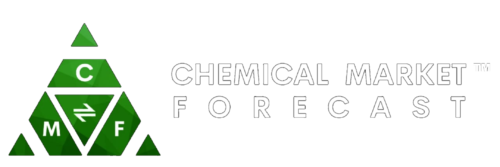Global Polyaspartic Coatings Market
Polyaspartic coatings are a type of high-performance protective coating that is increasingly being used in a wide range of applications, from industrial flooring to bridge coatings to decorative finishes. These coatings are known for their excellent durability, fast curing time, and high resistance to abrasion, chemicals, and UV radiation.
The polyaspartic coatings market is driven by several factors, including the growing demand for protective coatings in various end-use industries such as construction, automotive, and aerospace. The increasing awareness of the benefits of polyaspartic coatings, including their fast curing time, reduced downtime, and extended service life, is also contributing to the growth of the market.
One of the major advantages of polyaspartic coatings is their fast curing time. Unlike traditional coatings that can take several days to cure, polyaspartic coatings can cure in a matter of hours, reducing the downtime associated with coating applications. This is particularly important in industries where downtime can result in lost productivity and revenue, such as manufacturing and construction.
Another advantage of polyaspartic coatings is their excellent resistance to abrasion, chemicals, and UV radiation. These coatings can withstand harsh environments and are often used in applications where durability is critical, such as industrial flooring, bridge coatings, and transportation equipment. Polyaspartic coatings can also be formulated with anti-corrosive additives, making them ideal for use in marine and offshore applications.
The growing demand for eco-friendly coatings is also driving the polyaspartic coatings market. Polyaspartic coatings are low in volatile organic compounds (VOCs) and can be used in green building projects that require sustainable materials. These coatings also have a long service life, reducing the need for frequent re-applications and minimizing waste.
However, the polyaspartic coatings market also faces several challenges. One of the major challenges is the high cost of polyaspartic coatings compared to traditional coatings. While polyaspartic coatings offer superior performance and durability, their higher cost can be a deterrent for some end-users, particularly in price-sensitive industries.
Another challenge is the limited availability of skilled applicators. Polyaspartic coatings require specialized equipment and expertise for application, and there is a shortage of trained applicators in some regions. This can lead to higher costs and longer lead times for coating projects, limiting the growth of the market.
Some of the key suppliers of polyaspartic coatings include Rust-Oleum, PPG Industries, Sherwin-Williams, BASF, and Axalta. Rust-Oleum’s Polycuramine coating system is a popular option, known for its exceptional durability and abrasion resistance. PPG Industries offers a range of polyaspartic coatings under the Duranar® brand, including clear coatings, pigmented coatings, and primers. Sherwin-Williams offers a range of polyaspartic coatings, including its Loxon® Concrete & Masonry Primer and ArmorSeal® 1000 HS Polyurethane coating. BASF’s MasterTop® polyaspartic coatings are known for their high performance and fast cure times. Axalta’s Alesta® AP premium polyaspartic powder coating system is known for its exceptional color stability and gloss retention. These companies are among the leading suppliers of polyaspartic coatings, offering a range of products for various applications, including industrial, commercial, and residential projects.
Overall, the polyaspartic coatings market is expected to grow in the coming years, driven by the increasing demand for high-performance coatings in various end-use industries. Manufacturers are investing in research and development to develop new formulations of polyaspartic coatings that offer superior performance and can be used in a wider range of applications. Additionally, the growing focus on sustainability and eco-friendliness is expected to create new opportunities for polyaspartic coatings in green building projects and other environmentally conscious applications.
TABLE OF CONTENT
Global Polyaspartic Coatings Market Report
1 Market Introduction of Global Polyaspartic Coatings Market Report
2 Market Segmentation of Polyaspartic Coatings Market Report
2.1 Polyaspartic Coatings Market Segmentation By Region
2.2 Polyaspartic Coatings Market Segmentation By Type
2.3 Polyaspartic Coatings Market Segmentation By Crop Type
3 Cost Structure of Global Polyaspartic Coatings Market Report
4 Country Analysis of Global Polyaspartic Coatings Market Report
4.1 China
4.1.1 Polyaspartic Coatings Market Size in China
4.1.2 Polyaspartic Coatings Market Trends & Analysis in China
4.1.3 Key Polyaspartic Coatings companies in China
4.1.4 Regulatory Framework of Polyaspartic Coatings Market in China
4.2 Germany
4.2.1 Polyaspartic Coatings Market Size in Germany
4.2.2 Polyaspartic Coatings Market Trends & Analysis in Germany
4.2.3 Key Polyaspartic Coatings companies in Germany
4.2.4 Regulatory Framework of Polyaspartic Coatings Market in Germany
4.3 France
4.3.1 Polyaspartic Coatings Market Size in France
4.3.2 Polyaspartic Coatings Market Trends & Analysis in France
4.3.3 Key Polyaspartic Coatings companies in France
4.3.4 Regulatory Framework of Polyaspartic Coatings Market in France
4.4 Italy
4.4.1 Polyaspartic Coatings Market Size in Italy
4.4.2 Polyaspartic Coatings Market Trends & Analysis in Italy
4.4.3 Key Polyaspartic Coatings companies in Italy
4.4.4 Regulatory Framework of Polyaspartic Coatings Market in Italy
4.5 Netherland
4.5.1 Polyaspartic Coatings Market Size in Netherland
4.5.2 Polyaspartic Coatings Market Trends & Analysis in Netherland
4.5.3 Key Polyaspartic Coatings companies in Netherland
4.5.4 Regulatory Framework of Polyaspartic Coatings Market in Netherland
4.6 Russia
4.6.1 Polyaspartic Coatings Market Size in Russia
4.6.2 Polyaspartic Coatings Market Trends & Analysis in Russia
4.6.3 Key Polyaspartic Coatings companies in Russia
4.6.4 Regulatory Framework of Polyaspartic Coatings Market in Russia
4.7 Canada
4.7.1 Polyaspartic Coatings Market Size in Canada
4.7.2 Polyaspartic Coatings Market Trends & Analysis in Canada
4.7.3 Key Polyaspartic Coatings companies in Canada
4.7.4 Regulatory Framework of Polyaspartic Coatings Market in Canada
4.8 Mexico
4.8.1 Polyaspartic Coatings Market Size in Mexico
4.8.2 Polyaspartic Coatings Market Trends & Analysis in Mexico
4.8.3 Key Polyaspartic Coatings companies in Mexico
4.8.4 Regulatory Framework of Polyaspartic Coatings Market in Mexico
4.9 Singapore
4.9.1 Polyaspartic Coatings Market Size in Singapore
4.9.2 Polyaspartic Coatings Market Trends & Analysis in Singapore
4.9.3 Key Polyaspartic Coatings companies in Singapore
4.9.4 Regulatory Framework of Polyaspartic Coatings Market in Singapore
4.10 United Kingdom
4.10.1 Polyaspartic Coatings Market Size in United Kingdom
4.10.2 Polyaspartic Coatings Market Trends & Analysis in United Kingdom
4.10.3 Key Polyaspartic Coatings companies in United Kingdom
4.10.4 Regulatory Framework of Polyaspartic Coatings Market in United Kingdom
4.11 Switzerland
4.11.1 Market Size in Switzerland
4.11.2 Market Trends & Analysis in Switzerland
4.11.3 Key Polyaspartic Coatings companies in Switzerland
4.11.4 Regulatory Framework of Polyaspartic Coatings Market in Switzerland
4.12 Brazil
4.12.1 Market Size in Brazil
4.12.2 Market Trends & Analysis in Brazil
4.12.3 Key Polyaspartic Coatings companies in Brazil
4.12.4 Regulatory Framework of Polyaspartic Coatings Market in Brazil
4.13 USA
4.13.1 Market Size in US
4.13.2 Market Trends & Analysis in US
4.13.3 Key Polyaspartic Coatings companies in US
4.13.4 Regulatory Framework of Polyaspartic Coatings Market in US
4.14 Japan
4.14.1 Market Size in Japan
4.14.2 Market Trends & Analysis in Japan
4.14.3 Key Polyaspartic Coatings companies in Japan
4.14.4 Regulatory Framework of Polyaspartic Coatings Market in Japan
4.15 South Korea
4.15.1 Market Size in South Korea
4.15.2 Market Trends & Analysis in South Korea
4.15.3 Key Polyaspartic Coatings companies in South Korea
4.15.4 Regulatory Framework of Polyaspartic Coatings Market in South Korea
4.16 India
4.16.1 Market Size in India
4.16.2 Market Trends & Analysis in India
4.16.3 Key Polyaspartic Coatings companies in India
4.16.4 Regulatory Framework of Polyaspartic Coatings Market in India
4.17 Thailand
4.17.1 Market Size in Thailand
4.17.2 Market Trends & Analysis in Thailand
4.17.3 Key Polyaspartic Coatings companies in Thailand
4.17.4 Regulatory Framework of Polyaspartic Coatings Market in Thailand
4.18 Russia
4.18.1 Market Size in Russia
4.18.2 Market Trends & Analysis in Russia
4.18.3 Key Polyaspartic Coatings companies in Russia
4.18.4 Regulatory Framework of Polyaspartic Coatings Market in Russia
4.19 Malaysia
4.19.1 Market Size in Malaysia
4.19.2 Market Trends & Analysis in Malaysia
4.19.3 Key Polyaspartic Coatings companies in Malaysia
4.19.4 Regulatory Framework of Polyaspartic Coatings Market in Malaysia
4.20 Saudi Arabia
4.20.1 Market Size in Saudi Arabia
4.20.2 Market Trends & Analysis in Saudi Arabia
4.20.3 Key Polyaspartic Coatings companies in Saudi Arabia
4.20.4 Regulatory Framework of Polyaspartic Coatings Market in Saudi Arabia
5 Polyaspartic Coatings Market Trends
5.1 Polyaspartic Coatings Market Trends- Key Drivers
5.2 Polyaspartic Coatings Market Trends- Key Restraints
5.3 Polyaspartic Coatings Market Trends- Key Challenges
5.4 Porter’s Five Forces Analysis of Polyaspartic Coatings Market
5.5 PEST Analysis- Polyaspartic Coatings Market
6 Polyaspartic Coatings Market Forecast
6.1 Polyaspartic Coatings Market Forecast By Region
6.1.1 North America
6.1.2 Europe
6.1.3 APAC
6.1.4 Middle East
6.1.5 ROW
6.2 Polyaspartic Coatings Market Forecast By Type
6.2.1 Fertilizer
6.2.2 Pesticide
6.3 Polyaspartic Coatings Market Forecast By Crop Type
6.3.1 Fruits & Vegetables
6.3.2 Oilseed and Pulses
6.3.3 Cereals & Grains
6.3.4 Other
7 Supply Chain of the Polyaspartic Coatings Market Analysis
8 Opportunity Analysis
9 Scenario Analysis
10 Key Company Profiles
11 Strategic Conclusions – Polyaspartic Coatings Market Report
12 Abbreviations used in Polyaspartic Coatings Market Report






Reviews
There are no reviews yet.